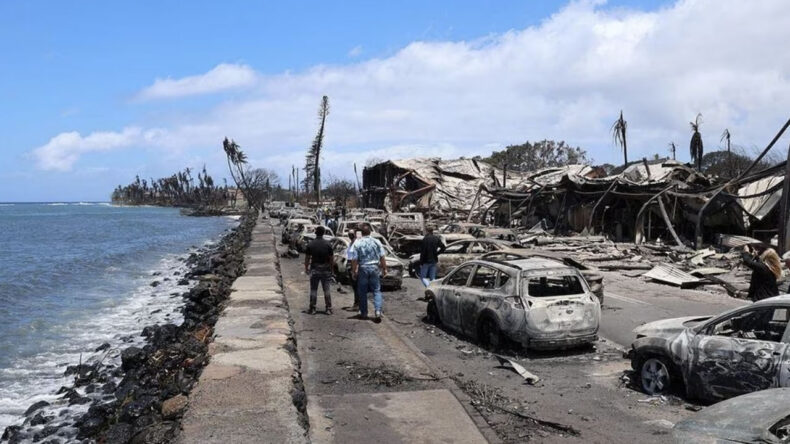As the Lahaina fire ravaged through Maui, an unsettling revelation has emerged — none of the 80 warning sirens stationed around the island were activated to alert residents of the impending danger. Amidst the devastation, questions arise about the efficacy of Hawaii‘s robust outdoor public safety warning system.
Silent Sirens Amidst the Flames
Despite boasting the largest system of outdoor public safety warning sirens in the world, none of these sirens were activated as the Lahaina fire unfolded. The absence of the deafening alarm calls into question the preparedness and communication during emergencies of such magnitude.
Hawaii’s Robust Siren System
Hawaii’s emergency management agency takes pride in its comprehensive siren network, designed to blare alarms in times of peril. However, in this instance, the island’s emergency management agencies refrained from activating the sirens, leaving residents bewildered about the reasons behind this critical decision.

Unheard Alarms of Danger
The sirens, known for their high decibel levels surpassing that of a loud rock concert, remained silent even as the Lahaina fire posed a grave threat. The inability to hear these alarms, designed to be audible from over half a mile away, has left survivors grappling with the question of why no one sounded the alert.
Multilayered Alerts
While the sirens remained silent, other alert systems were set into motion. Cell Phone alerts, radio broadcasts, and television announcements were activated to inform residents. However, challenges surfaced as power outages plagued Lahaina, preventing many from receiving these critical alerts.
Evaluating the Response
The Hawaii Emergency Management Agency’s spokesperson, Adam Weintraub, acknowledged that the sirens were not activated. He emphasised that the sirens alone were not meant as evacuation signals but as prompts for residents to seek further information. The agency will cooperate with the state attorney general’s review of the response to the fires, shedding light on the decision-making process.
Critical Time Constraints
Maui’s fire chief, Bradford Ventura, shed light on the challenging circumstances surrounding the response. With the rapid escalation of the Lahaina fire fueled by strong winds, emergency management officials had limited time to initiate evacuation orders. The urgency of the situation underscored the complexity of managing a disaster of this magnitude.
An Unheard Cry for Help
Residents like Robin Ritchie, a longtime Lahaina area resident, expressed their frustration and anger over the lack of warning. The absence of siren alerts has left a trail of unanswered questions and anguish, with lives lost due to the absence of timely information.
Devastation Unleashed:
The Lahaina fire, which wreaked havoc across Maui, stands as a poignant reminder of the devastating impact of natural disasters. The blaze consumed homes, landscapes, and livelihoods, leaving behind a trail of destruction. In the midst of this catastrophe, the silence of the warning sirens has cast a shadow of uncertainty on the effectiveness of emergency response strategies.
Community Resilience and Preparedness:
Amidst the challenges faced during the Lahaina fire, tales of community resilience and preparedness emerge. Stories of neighbours helping neighbours, and individuals relying on their instincts, paint a picture of determination amidst adversity. While the absence of warning sirens raises valid concerns, it also highlights the importance of individual and collective readiness in times of crisis.
The tragic events of the Lahaina fire bring to the forefront the importance of reliable and effective emergency communication systems. As the aftermath of this devastating incident unfolds, it serves as a reminder of the critical role that warning systems play in safeguarding lives during crises. Amidst the ashes, the search for answers continues, aiming to prevent such lapses and ensuring that communities are adequately informed and prepared in the face of adversity.













